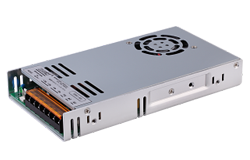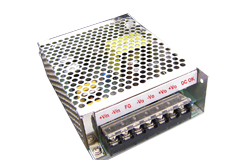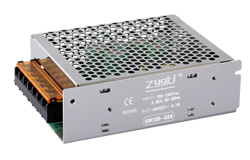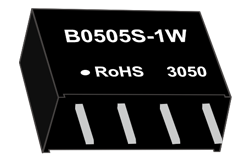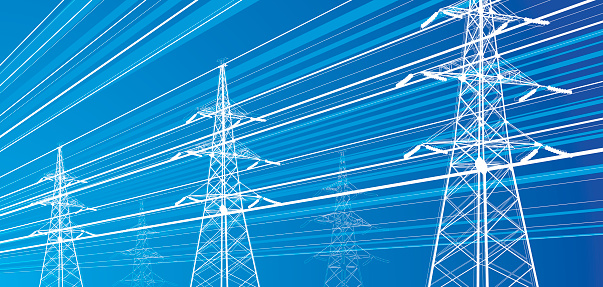nyheder
Designing an AC-DC Converter Circuit
Author: ZYG Power Module Time: 2023-5-2
Introduction
AC-DC converters are electronic circuits used to convert an AC voltage to a DC voltage. These circuits are used in a wide range of devices, including power supplies for electronic equipment, battery chargers, and LED drivers. In this article, we will discuss the design of an AC-DC converter circuit.
Design Considerations
The design of an AC-DC converter circuit involves several considerations, including the input voltage, output voltage, output current, and efficiency. The input voltage is the AC voltage that is to be converted to DC. The output voltage is the DC voltage required for the load. The output current is the current that the load requires. The efficiency is the ratio of the output power to the input power.
The design of the AC-DC converter circuit involves selecting the appropriate components, including the diode bridge, smoothing capacitor, and voltage regulator. The diode bridge is used to convert the AC voltage to a pulsating DC voltage. The smoothing capacitor is used to remove the ripples in the DC voltage. The voltage regulator is used to regulate the DC voltage to the required level.
Circuit Diagram
The circuit diagram of the AC-DC converter is shown below.
The circuit consists of a diode bridge, a smoothing capacitor, and a voltage regulator. The diode bridge is made up of four diodes, D1 to D4. The AC voltage is applied across the diode bridge, and the pulsating DC voltage is obtained at the output of the diode bridge.
The smoothing capacitor, C1, is connected in parallel with the output of the diode bridge. The capacitor charges to the peak voltage of the pulsating DC voltage and discharges when the voltage drops. This results in a smoother DC voltage at the output of the capacitor.
The voltage regulator, IC1, is connected to the output of the smoothing capacitor. The voltage regulator regulates the DC voltage to the required level. The output of the voltage regulator is connected to the load.

Component Selection
The selection of the components for the AC-DC converter circuit depends on the input voltage, output voltage, output current, and efficiency requirements. The diodes should be capable of handling the peak voltage of the AC input. The smoothing capacitor should have a suitable capacitance value to provide adequate smoothing of the DC voltage. The voltage regulator should be chosen based on the required output voltage and output current.
Efficiency
The efficiency of the AC-DC converter circuit is an important consideration. The efficiency is the ratio of the output power to the input power. The efficiency can be calculated using the following formula:
Efficiency = (Output power / Input power) x 100%
The efficiency of the circuit depends on the losses in the diode bridge, smoothing capacitor, and voltage regulator. The diode bridge has a voltage drop of about 0.7V per diode, resulting in a total voltage drop of 1.4V. The smoothing capacitor has a leakage current that causes a small loss. The voltage regulator has a dropout voltage that causes a loss. The efficiency of the circuit can be improved by selecting components with low losses.
Conclusion
In conclusion, the design of an AC-DC converter circuit involves selecting the appropriate components, including the diode bridge, smoothing capacitor, and voltage regulator. The design considerations include the input voltage, output voltage, output current, and efficiency. The circuit diagram shows the arrangement of the components. The component selection depends on the requirements of the circuit. The efficiency of the circuit can be improved by selecting components with low losses.
Tidligere: Industrial AC-DC Converter: Efficient and Reliable Power Conversion
Næste: Understanding AC-DC Power Supply: A Comprehensive Guide
relevant information
-
2023-7-11
AC-DC Power Supply: Providing Efficient and Reliable Electricity Conversion
In today's modern world, electricity is an essential part of our daily lives. It powers our homes, offices, and industries, providing us with the energy we need to carry out various activities. However, the electricity we receive is not always in the form that we can use directly. This is where AC-DC power supplies come into play. They play a crucial role in converting the alternating current (AC) we receive from the power grid into direct current (DC) that is suitable for powering electronic devices. An AC-DC power supply is a device that takes in AC power and converts it into DC power with the desired voltage and current levels. It is commonly used in various applications, ranging from small...
Se detaljer -
2023-8-26
DM Series DC DC Power Supply manufacture
DM Series DC DC Power Supply is a cutting-edge technology that has revolutionized the power supply industry. This innovative and versatile product offers a wide range of benefits and features that make it an ideal choice for various applications. In this article, we will delve into the details of the DM Series DC DC Power Supply and explore why it has gained such popularity in the market. First and foremost, the DM Series DC DC Power Supply is known for its high efficiency and reliability. It utilizes advanced power conversion technology, which ensures minimum energy loss and maximum power output. This means that it can deliver a stable and consistent power supply, even in demanding conditions. Whether you are using...
Se detaljer -
2023-4-14
AC-DC Converter: Power Conversion Made Efficient and Easy
In today fast-paced world, we rely heavily on electronic devices that require a constant source of power. While our homes and offices are supplied with alternating current (AC) power, many electronic devices need direct current (DC) power to function. This is where an AC-DC converter comes in. An AC-DC converter is an electrical circuit that converts the input AC power into DC power. The main function of the converter is to provide a stable and regulated DC output voltage to power electronic devices. It is commonly used in computers, televisions, smartphones, and other electronic gadgets. There are different types of AC-DC converters, including linear and switching converters. The linear converter uses a transformer to change the voltage level, while a...
Se detaljer -
2022-8-10
Sådan finder du en pålidelig strømforsyningsproducent
Har du brug for at købe strømmoduler, men ved ikke, hvordan man finder en pålidelig producent? Dette er et vigtigt spørgsmål, som mange venner står over for. Det er ikke svært at finde producenter. Det ene er gennem introduktionen af andre kolleger i branchen. De har erfaring med at handle med producenter af strømmoduler. Hvis de anbefaler, kan de kontakte dem direkte. Det andet er at finde producenter på internettet. , Der er mange sådanne producenter, men vær forsigtig, der er trods alt alle slags producenter. Det anbefales, at du søger producenter med højt omdømme og godt omdømme. Når du vælger en strømmodulproducent, skal du finde et professionelt teknisk firma. Den såkaldte professionelle virksomhed er faktisk en højteknologisk virksomhed dedikeret...
Se detaljer -
2023-4-13
AC-DC Converter: Converting Alternating Current to Direct Current
An AC-DC converter, also known as a rectifier, is an electronic device that converts alternating current (AC) to direct current (DC) by utilizing diodes or other semiconductor devices. This conversion is essential for many electronic devices that require DC power to function, such as computers, televisions, and radios. There are two main types of AC-DC converters: half-wave and full-wave rectifiers. A half-wave rectifier only allows one-half of the AC waveform to pass through, resulting in a DC voltage that is only half as large as the AC voltage. A full-wave rectifier allows the entire AC waveform to pass through, resulting in a DC voltage that is nearly equal to the AC voltage. In addition to diodes, AC-DC converters may also...
Se detaljer -
2023-7-12
The Evolution of Industrial AC-DC Converters: Advancements and Applications
Introduction Industrial AC-DC converters play a crucial role in converting alternating current (AC) power into direct current (DC) power. This conversion is essential for powering a wide range of industrial applications such as motor drives, power supplies, and renewable energy systems. Over the years, these converters have undergone significant advancements to meet the growing demands of the industrial sector. This article aims to explore the evolution of industrial AC-DC converters, highlighting the key advancements and their applications. Advancements in Industrial AC-DC Converters 1. Rectifier Circuits: Rectifier circuits are the fundamental building blocks of AC-DC converters. Initially, passive diode rectifiers were used, which were simple and cost-effective. However, these rectifiers suffered from poor power factor and low efficiency. To overcome these...
Se detaljer




